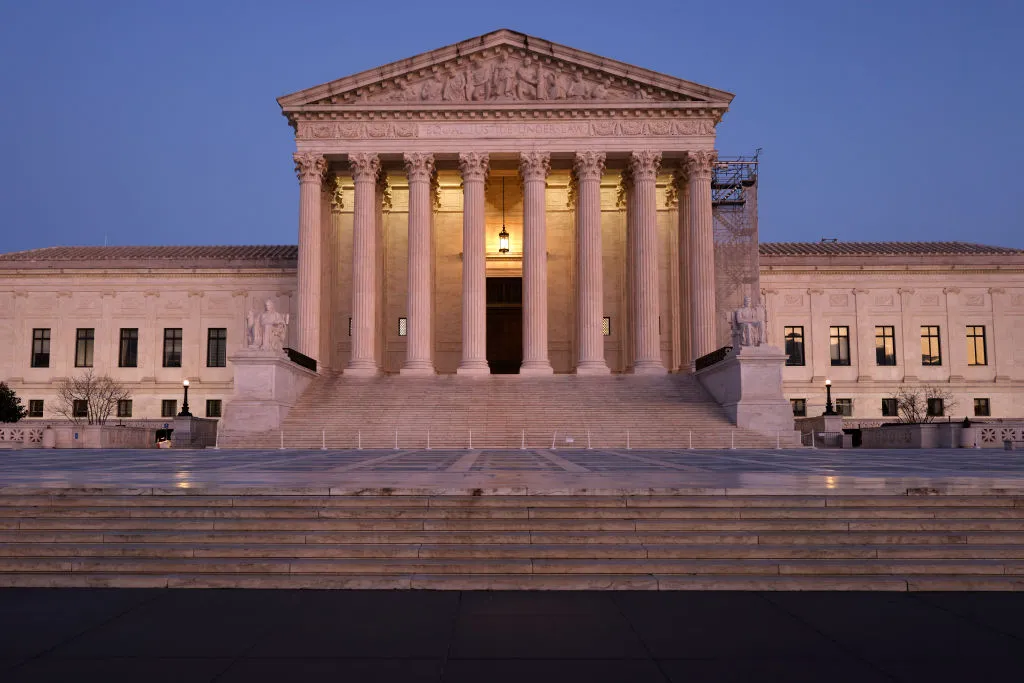Trump administration responds to Supreme Court order asking it for current position in SNAP payment dispute (updated)


Updated on Nov. 10 at 11:20 a.m.
On Monday morning, the Trump administration informed the Supreme Court that it intends to continue to seek a stay to a district court order requiring the government to pay $4 billion to fully fund the federal food-stamp program for November. At the same time, the administration told the court that “the Senate voted to begin the process for ending the shutdown and funding the government—including full funding for SNAP through the end of the fiscal year,” and “[t]hat proposal, if ultimately adopted by both Houses of Congress and signed by the President, would end the shutdown and moot this application.”
The issue first came before the Supreme Court on Friday night when the Trump administration asked the Supreme Court to pause the ruling by a federal judge in Rhode Island. The “unprecedented” order by U.S. District Judge John J. McConnell, Jr. “makes a mockery of the separation of powers,” U.S. Solicitor General D. John Sauer wrote. Sauer acknowledged that the “funding lapse” due to the 38-day government shutdown “is a crisis,” but he called it “a crisis occasioned by congressional failure and one that can only be solved through congressional action.”
Congress funds the program, known as the Supplemental Nutrition Assistance Program, during its annual appropriations process. The program was fully funded through Sept. 30, 2025, the end of the 2025 fiscal year, but there has been no appropriation for the 2026 fiscal year.
On Oct. 24, the U.S. Department of Agriculture, which administers the program, announced that it had suspended benefits for November because of the government shutdown. That prompted a group of nonprofits and cities to go to federal court in Rhode Island, where they argued that the suspension of benefits violated the federal laws governing administrative agencies. They asked McConnell to require the agency to use emergency funds to pay for the November benefits.
McConnell initially offered the Trump administration a choice between quickly making partial payments from the emergency funds or fully funding the November benefits using funds from other sources. The Trump administration chose the former option, but on Thursday, McConnell ordered the Trump administration to go with the latter option and pay the November benefits in full by Friday.
The Trump administration appealed to the U.S. Court of Appeals for the 1st Circuit. When it filed its application, the court of appeals had not acted on the government’s request. In a letter distributed to reporters shortly after the Trump administration’s application was filed, Sauer told the justices that the 1st Circuit had denied the government’s request for an immediate administrative stay but indicated that it would act “as quickly as possible” on the request for a stay pending appeal.
Urging the justices to block McConnell’s ruling, Sauer argued that “the SNAP statute is explicit that SNAP benefits are subject to available appropriations, and it states plainly that SNAP payments shall not exceed the funds appropriated for the program.” If there is not enough funding, he wrote, “USDA will direct States to reduce their benefits—which is exactly what USDA did this week.”
Moreover, Sauer warned, if McConnell’s ruling is “allowed to stand,” it will “metastasize and sow further shutdown chaos. Every beneficiary of a federal program could run into court, point to an agency’s general discretion to prioritize funding, and claim that failing to prioritize their chosen program” violated the federal law governing administrative agencies.
Finally, Sauer continued, once the funds have been paid out, “there is no ready mechanism for the government to recover” them.
In an order released to reporters at 9:17 p.m. EST on Friday night, Justice Ketanji Brown Jackson issued the administrative stay that the government had requested, giving the court of appeals time to weigh in on the Trump administration’s motion for a stay pending appeal. The order states that “[t]his administrative stay will terminate forty-eight hours after the First Circuit’s resolution of the pending motion, which the First Circuit is expected to issue with dispatch.”
On Sunday night, the U.S. Court of Appeals for the 1st Circuit turned down the Trump administration’s request to pause the district court’s ruling while the government appeals, starting the 48-hour clock in the administrative stay that Jackson issued on Friday night.
Jackson then issued a new order shortly after 8 a.m. on Monday, instructing the Trump administration to tell the court by 11 a.m. on Monday whether it intends to rely on Friday’s application to continue to seek a stay. If it does intend to do so, Jackson said, the government should file any supplemental brief by 4 p.m. on Monday, with any responses from the challengers to follow by 8 a.m. on Tuesday.
On Monday morning, the Trump administration informed the court that it “intends to pursue a stay in this matter and will file a supplemental brief by 4:00pm this afternoon.” But the administration also stated that “the Senate voted to begin the process for ending the shutdown and funding the government—including full funding for SNAP through the end of the fiscal year,” and “[t]hat proposal, if ultimately adopted by both Houses of Congress and signed by the President, would end the shutdown and moot this application.”
Posted in Court News, Emergency appeals and applications, Featured
Cases: Rollins v. Rhode Island State Council of Churches